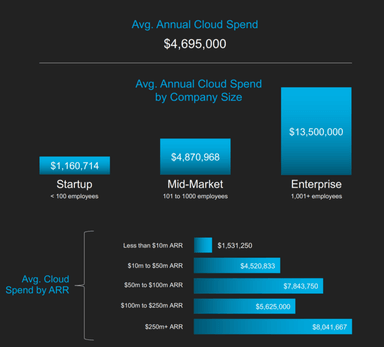Interview Series: Building Successful Product Partnerships


Updated: Mar 30
This article was guest written by Shohei Narron, Technology Partner Manager at Google Cloud
Partnerships covers a wide range of business activities, from building a product on another company’s platform, to joint marketing with other firms to reach new audiences, requesting implementation support from a systems integrator while your startup focuses on building the product, and more.
While consulting firms and systems integrators help accelerate product rollout and onboarding, it doesn’t always widen a company’s ecosystem of possible use cases, supporting technologies, and product stickiness once it’s been adopted by customers. For that, products need technical integrations between products that make it easier to build on the initial use case, augmenting a product’s features where it lacks what the customer needs, or to reach out to new customer segments as a startup moves upmarket.
Many of our Partnership Leaders community members work in exactly this field, managing strategic product integration initiatives at their respective companies to create a win-win-win outcome for their customers, partners, and the companies themselves. We sat down with five such partner leaders working on product integrations to understand what makes integrations a success, how to avoid common pitfalls, and how to sustain product partnership relationships long after the initial excitement of signing a partnership agreement has waned.
This Spotlight chapter is brought to you in partnership with Sendoso.
~~~~~~~~~~~~~~~~~~~~~~~~~~~~~~~~~~~~~~~
Partnership Leaders is the industry association for Partnership/Channel/ Alliances/Business Development leaders.
The association’s mission is to elevate the role of partnership leaders at their companies and provides a vibrant online community, virtual events, curated professional networking opportunities, and educational resources to drive success for our members.
~~~~~~~~~~~~~~~~~~~~~~~~~~~~~~~~~~~~~~~
Publication Schedule:
November 10: Josha Benner — Director of Technology Partnerships, Mixpanel
November 17: Michelle Lerner — Director Business Development, Branch
November 24: Kenny Browne — Senior Product Manager, Daxko
December 1: Allison Kelly — Head of Growth Strategy, Attentive
December 8: Jake Wallace — Head of Strategic Partnerships, SignEasy
Takeaways, a.k.a. tl;dr
Prioritize — If You Try to Build Everything, You’ll Build Nothing of Substance:
Due to webhooks, APIs, and many other methods that make integrating easier than they have been, it’s crucial to figure out what kinds of integrations you’ll pursue, and conversely, what partnerships you will not pursue. There isn’t enough time in the day to work on all options, especially at a startup, so using some of the following points as a rule of thumb when deciding which product integration to pursue can help focus your efforts on the right kinds of partners:
- Partnership engagement: Do you and the partner actually feel excited and want to help one another out? Though this is not at all a scientific measure, there needs to be a spark between companies, especially at an early stage startup without much partnership activity to begin with.
- Customer overlap / Total Addressable Market (TAM): Map your customer and target prospect list to figure out if there’s a significant overlap that you can tackle together. Spreadsheets are a good start, but Crossbeam and other tools can make your life much easier.
- Existing demand: Are you hearing about the partner candidate through customers, Forrester, G2 Crowd, and other channels?
- Product feature gap: Is there a feature gap or area your product team isn’t going to pursue in the short-run, but can unblock certain deals and use cases? What companies build them, and would they be interested in an integration?
- Level of effort needed: Is the integration a quick win, both in effort required and potential ROI, or is it going to take a while for a very small return? If it’s something that’s important but will take significant lift, is it important enough to get support from your executives?
- A cohesive better together story: The integration may be spiffy, but does it actually solve your customers’ pain points? How succinctly can you describe the joint value proposition?
What to Do After the Integration is Complete — Building Momentum
“Build it and they will come” are famous last words from countless product teams that discounted the value of go-to-market activities meant to spread the word and build momentum behind the great products they’ve developed. The same goes for partnership teams as they build and onboard new partnerships into their ecosystem, both internally and externally — you need your field team members to know the latest in integration options and joint value propositions even before your customers start to take notice.
We found the following to be some common ways to build go-to-market momentum across all the leaders we interviewed:
- Announcing the integration: Whether it be an official press release, blog post, or social shoutout, there needs to be some kind of announcement to put the word out.
- Field team enablement: From SDRs to AEs and CSMs, your customer-facing teams need to understand what was built, why it’s important to customers, how to implement the integration, and more importantly (and let’s be honest), how your field team members can hit their quota quicker. While there should be an initial enablement process, for each integration, there also should be an ongoing partner enablement process as a type of continuing education or refresher session with a weekly or monthly cadence.
- Build field team-specific collateral: Related to internal stakeholder enablement. Build collateral that your team can leverage immediately, from one-pagers, to slides they can include in their pitch deck, pricing sheets, and more. The easier it is for field team members to digest and include this information in their sales process, the better.
- Internal and external information knowledge base: Creating solution briefs and running webinars are important, but it doesn’t help anyone when people looking for information on partners can’t find much easily. Build an internal and external partner portal as your central partner knowledge base for people to find battle cards, technical documentation, blog posts, and other collateral published between you and your partner.
Keeping Track of Success
We can’t emphasize the importance of keeping track of success. We even dedicated our last spotlight series to understanding how to measure partnership success, yet here we are, asking partnership leaders how they evaluate whether their product integrations worked or not. To be completely honest, there will probably be a section on how to measure success in every single quarterly spotlight series. And because of the various forms a partnership team can take, there’s never a shortage of best practices, gotchas, and shortfalls every partnership team experience. For product partnerships, it came to how well you attribute sourced revenue, or create proxies to sourced revenue when you can’t influence revenue directly.
- Internal efficiency metrics: Number of new integrations published per quarter; number of joint event and sponsorships per quarter (webinars, blog posts, etc.).
- Adoption metrics: Number of installs and trials; conversion rates.
- Usage metrics: Weekly and monthly active users; user concentration (i.e. is usage spread out across users / companies, or is there one user / company blowing up usage?).
- Revenue metrics: New pipeline dollars; close-won / lost deals with partner influence; referral commission from referring customers to partners.

